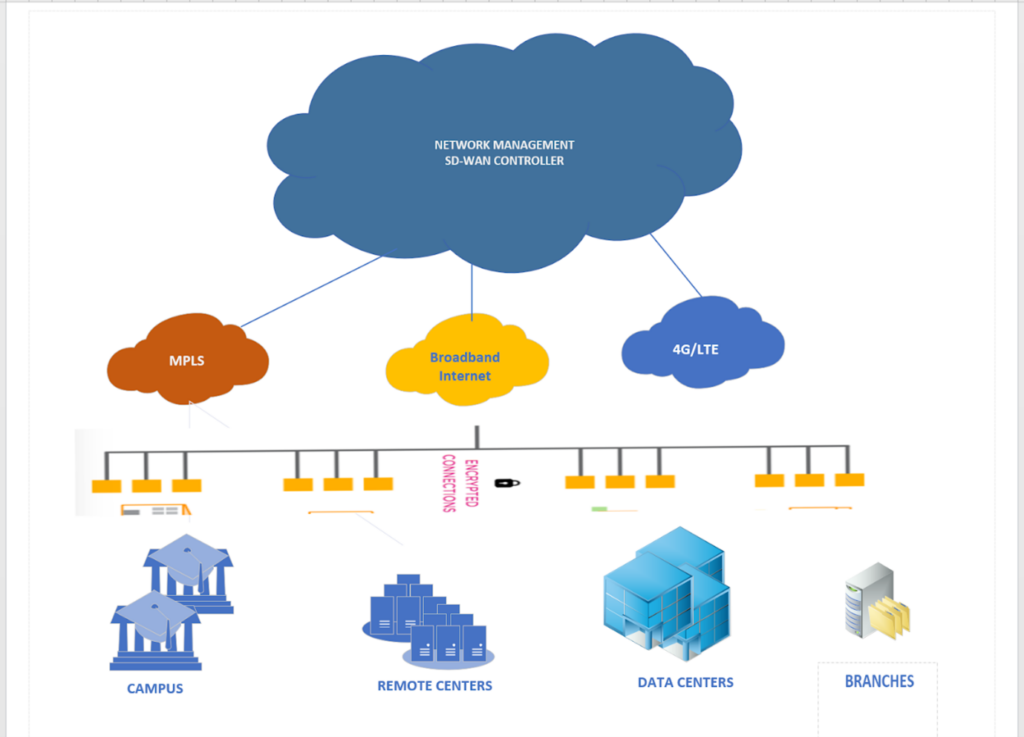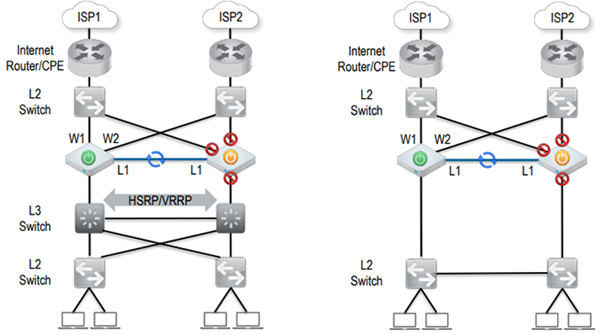Introduction
Navigating the SD-WAN landscape can be overwhelming, but SDN Global can help simplify the process. Since 2014, we have been working with clients to assess and deploy next-gen technologies, including SD-WAN. Our approach combines a deep understanding of business needs with technical expertise to achieve rapid and incremental delivery.
What is SD-WAN?
Software-defined WAN enables to build and provision of WAN connections using software-defined networking technology thereby increasing the performance, scalability, and reliability at the compute and application tiers improving the user experience. SD-WAN technology gears towards building a cost-effective solution to empower your network making it a highly agile and manageable enterprise network between Head Office and branch offices or between data centers spanning large geographic distances.
The goal of SD-WAN is to use multiple physical WAN links of any sort to carry business traffic without the need for complex configuration and network engineering.
As per Gartner, SD-WAN has four characteristics:
1. Must support multiple connection types
- MPLS, Internet, LTF, etc.
2. Can do dynamic path selection
- Allows for load sharing across WAN connections
3. Provides a simple interface for managing WAN
- Must support zero-touch provisioning at a branch, should be as easy as setting up a home Wi-Fi
4. Support for multiple Third Party Services
- Must Support VPN, WAN Optimization, controllers, firewalls, web gateways, and other services.
Enterprises are adopting SD-WAN to deliver improvements in cost, reliability, visibility and security in the WAN.
Global interest in SD-WAN
Industry analysts including Gartner, IHS, IDC, and others have made increasingly bold predictions for the growth of the SD-WAN market. In less than 12 months, we have seen SD-WAN transition from early-adopter environments to mainstream offerings. It is now part of almost every WAN refresh discussion in the industry.
Where do I start?
First, a business needs to focus on the business case. It’s important to understand the total cost structure across Direct and Indirect Operating Costs and build a TCO comparison. SDN Global has standardized methodologies that can assist any organization with this analysis. This will give any organization options to choose from in terms of solutions, architecture, and security design. Operational strategies should also be figured out so that the balance of high availability and cost structure can be found.
SDN Global has standardized methodologies that can assist any organization with this analysis.
We can give any organization options to choose from in terms of solutions, architecture, and security design.
We can assist with operational strategies so that the balance of high availability and cost structure can be found.
Technical Considerations
SD-WAN can require a new mindset for network architecture, from the underlay circuits to the integration between the overlay and the existing WAN.
Here are some initial questions to answer for an organization to consider regarding SD-WAN architecture that allows an organization to analyze its current and projected requirements for its WAN:
- The current and future network architecture
- Number of branches
- Number of employees at each branch
- Bandwidth requirements
Which SD-WAN technical capabilities are required?
Every IT organization must evaluate its specific requirements and design a solution that comprises a comprehensive and growing catalog of capabilities. The below few questions help evaluate the SD-WAN capabilities required by the organization:
- What is the current network architecture?
- What are the security requirements at the branches?
- What critical applications are used at your local branches?
- Do your applications reside in data center or in a cloud?
- Do you require WAN optimization for specific branch applications?
- List the cloud-based applications that require prioritization?
- Any guest Wi-Fi at branch locations?
- Do you have any latency dependent applications such as voice and video?
Network Design Models
After collating all the data related to business considerations and technical requirements, its important to figure out a design pattern that best suits your requirements. There are multiple Network Models that an organization can potentially chose from. Here are a couple of sample design patterns that SDN Global has implemented across various customers.
Managed SD-WAN
Key SD-WAN Management Issues
Traffic management, WAN transport management, service providers, security, and interoperability with other WAN elements are a few key segments that need evaluation by SD-WAN management.
Application QOS: Video, voice, and application data management have different WAN traffic requirements and the management of the same is complex. Also the location of apps – data center or cloud, security requirements, and branch locations add to this complexity. Most organizations use a console provided by SD-WAN to manage the traffic and application Quality of Service.
Managing multiple WAN links: Most organizations use a combination of MPLS, Broadband internet, or 4G/LTE connections for WAN connectivity. Tracking scalability, reliability, and performance of certain links from specific service providers can be done by SD-WAN management. It can also help them adjust traffic patterns when application performance suffers.

